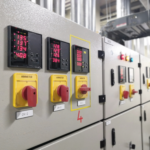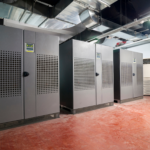In today’s technology-driven world, organizations heavily rely on critical power systems to ensure uninterrupted operations and protect valuable equipment and data. However, power disruptions can pose significant risks and result in costly downtime. That’s why effective critical power planning is essential. In this article, we will explore how to assess and mitigate risks through robust critical power planning strategies.
Assessing Risks
The first step in critical power planning is to conduct a comprehensive risk assessment. Identify potential risks and vulnerabilities that could impact power supply and system reliability. Common risks include power outages, grid failures, equipment failures, natural disasters, and human errors. Assess the potential impact of these risks on your organization’s operations, data integrity, and revenue streams.
Implementing Redundancy
To mitigate risks, redundancy is key. Redundancy involves having backup systems and alternative power sources in place. One critical aspect is implementing Uninterruptible Power Supply (UPS) systems. UPS systems provide immediate backup power during power outages or disruptions, ensuring uninterrupted operations. Consider implementing redundant UPS systems to eliminate single points of failure and increase system resilience.
Backup Power Generation
In addition to UPS systems, backup power generation is crucial for extended power outages. Installing backup generators can provide a reliable and continuous power source during prolonged outages. Conduct a thorough analysis of power requirements to ensure generators are appropriately sized to support critical systems and equipment. Regular maintenance and testing of backup generators are also vital to ensure their reliability when needed.
Surge and Transient Protection
Power surges and transients can cause significant damage to critical equipment. Implementing surge protection devices (SPDs) helps mitigate these risks. SPDs divert excessive voltage and protect equipment from damage. Install SPDs at key locations throughout the power distribution system to safeguard critical equipment and minimize the risk of equipment failure due to power fluctuations.
Monitoring and Remote Management
Continuous monitoring of critical power systems is essential to identify potential risks and proactively address any issues. Implement a comprehensive monitoring system that provides real-time visibility into the performance of UPS systems, generators, and other critical power components. Remote management capabilities enable system administrators to monitor and control power systems from anywhere, allowing for immediate response to alarms or critical events.
Regular Maintenance and Testing
Critical power planning should include regular maintenance and testing of all power infrastructure components. This ensures that systems are operating optimally and are prepared for potential risks. Conduct routine inspections, battery testing, and load testing to identify any issues before they escalate into critical problems. Develop a maintenance schedule and adhere to it consistently to maintain system reliability.
Conclusion
Effective critical power planning is crucial for organizations that rely on continuous operations. By conducting a thorough risk assessment, implementing redundancy measures, and deploying backup power generation, surge protection, and monitoring systems, organizations can mitigate risks and ensure uninterrupted power supply. Regular maintenance and testing further enhance system reliability. With robust critical power planning strategies in place, organizations can minimize downtime, protect critical equipment and data, and maintain business continuity even in the face of unforeseen power disruptions.





